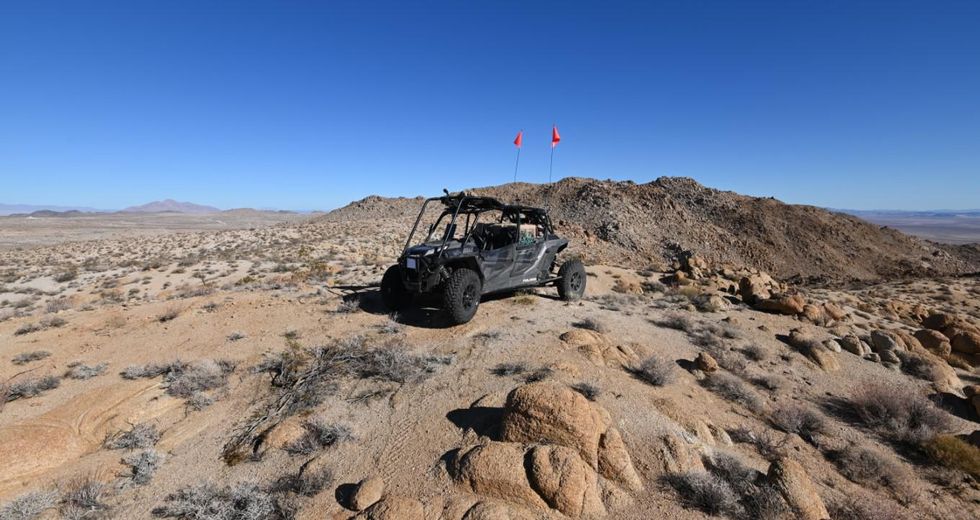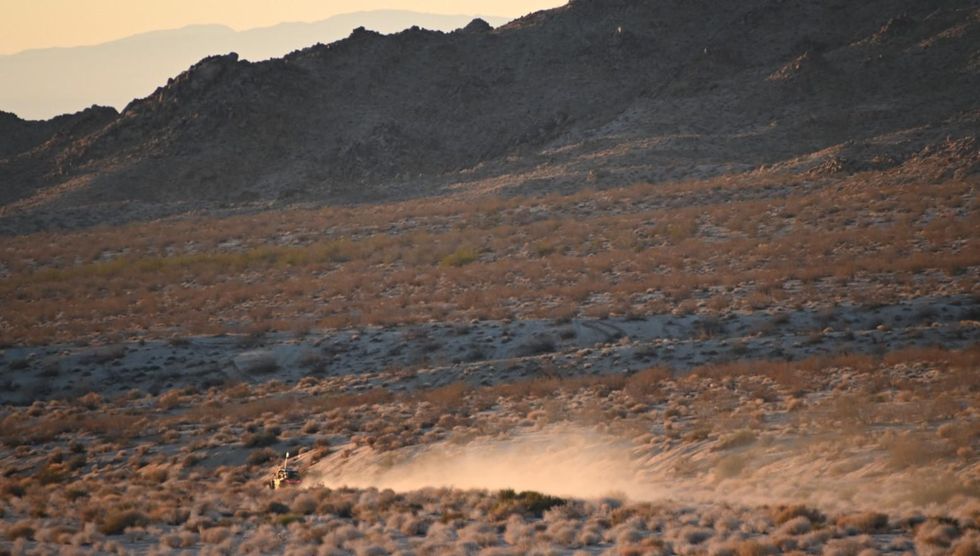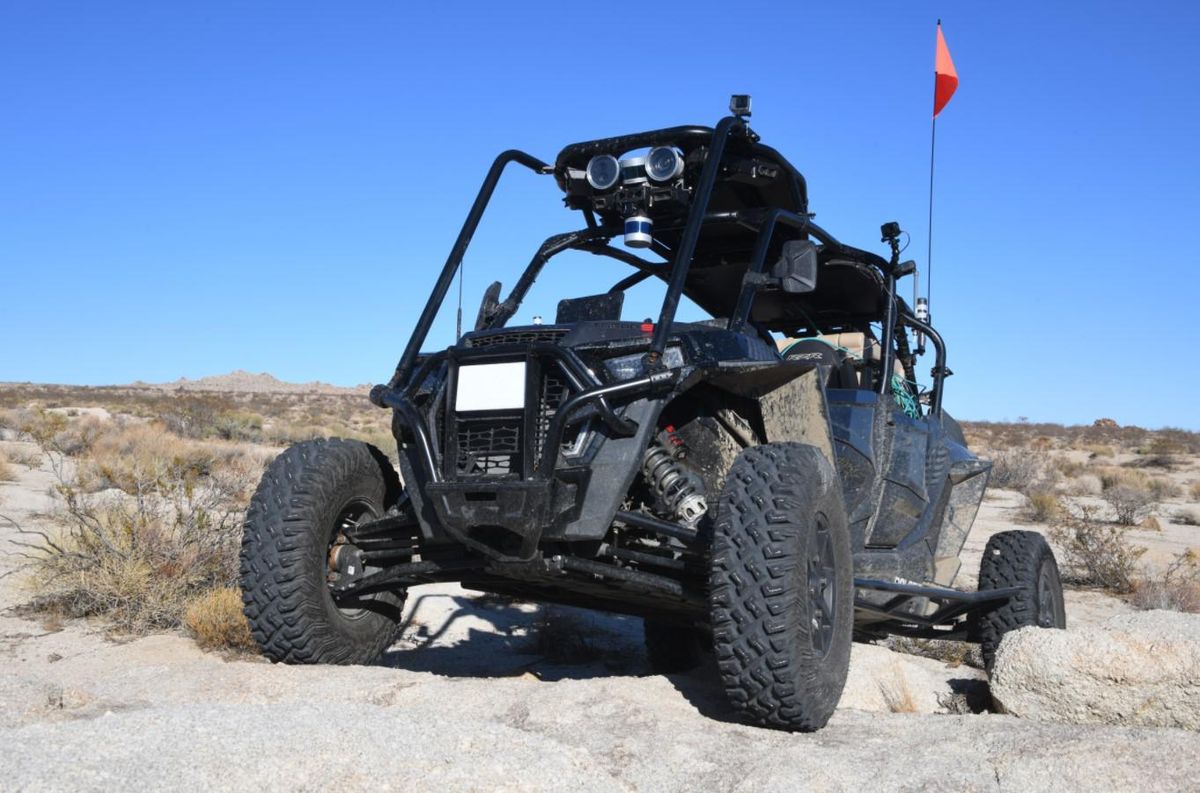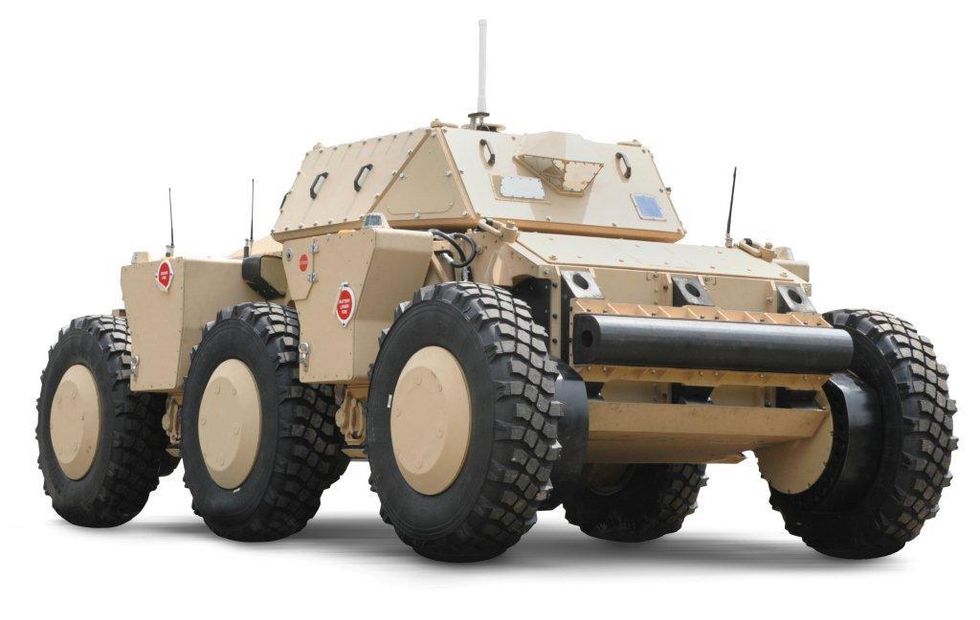DARPA has announced the first phase of a shiny new program called RACER, which stands for Robotic Autonomy in Complex Environments with Resiliency. I’m not sure why they couldn’t have just left it at RACE, but that’s government backronyms for you. Anyway, the RACER program is all about high-speed driving in unstructured environments, which is a problem that has not been addressed by the commercial-vehicle-autonomy industry, because we have, you know, roads. But where DARPA is going there are no roads, and the agency wants autonomous vehicles to be able to explore on their own as well as keep up with vehicles driven by humans.
DARPA has announced three teams that will each get funding and vehicles: Carnegie Mellon University, NASA JPL, and the University of Washington. And if everything goes well, we’ll be seeing some absolutely bonkers off-road autonomous racing over the next three years.
The goal of the Robotic Autonomy in Complex Environments with Resiliency (RACER) program is to develop and demonstrate new autonomy technologies that enable ground combat vehicles to maneuver in unstructured, off-road terrain at speeds that are no longer limited by the autonomy software or processing time, but only by considerations of sensor limitations, vehicle mechanical limits, and safety. At a minimum, performance at par with a human driver, or a tele-operated vehicle should be achieved. RACER will demonstrate game-changing autonomous unmanned ground vehicle mobility focused on speed and resiliency using a combination of simulation and advanced platforms.
This video involves a human driver, I think, but shows the kind of off-road terrain that will initially challenge the program participants:
DARPA
Not easy for a human, and even harder for an autonomous driver. The terrain is complex—how do you tell what bushes it’s safe to drive through, for example? Maybe being able to spot tire tracks from previous vehicles would be helpful, but it’s a challenging vision problem regardless—as well as a potentially deceptive one. And how do you even plan a route with such limited information about what’s ahead, even just a few tens of meters ahead? These are just a very few of the challenges the new program faces, all totally different from what autonomous vehicles on paved roads have mastered or attempted to master. Here’s what DARPA has to say about this:
On-road autonomy algorithms operate in well-structured and highly predictable environments with limited obstacle classes. They are also able to leverage the availability of large structured data sets, including highly detailed and labeled maps and highly accurate localization (from sensed and external sources). As a result, on-road autonomy algorithms are based on relatively simple, two-dimensional (2D) navigation tasks that require minimal contextual understanding of their environment beyond classification of nearby objects, such as vehicles, traffic signals, and pedestrians. In addition, the self-driving car industry has developed extensive field-testing capabilities, and has conducted millions of hours of testing to gather data, train algorithms, and improve reliability.
In contrast, the military off-road environment is more challenging and complex, with three-dimensional surfaces, hundreds of obstacle classes, lower fidelity or limited mapping data, and no defined road networks or driving rules. The RACER off-road motion-planning problem is continuous and must be executed in an online adaptive manner. While current on-road autonomy does not directly transfer to the off-road domain, the sensors, processing approaches, perception algorithms, and other methods from on-road autonomous vehicles are applicable. RACER seeks to leverage these advances to apply them in the off-road domain and generalize them to novel environments.
As with most things that DARPA does, however, the techniques developed through the RACER problem aren’t military-specific. For example, you can easily imagine how they could be applied to situations where you’re driving on a road that isn’t part of a data set. Or, there are lots of roads out there that are just terrible, and it would be nice if an autonomous vehicle could handle those as well, right?

Each team will be provided with vehicles by DARPA, each of which will have the same sensors, the same compute, and the same ROS-based software infrastructure, because DARPA wants to emphasize the development of autonomy software and algorithms rather than seeing which team can staple the most expensive sensors to their vehicle. During the first phase, the vehicles will be off-road buggy-type things, similar to the Polaris MRZR-X pictured above. If the first phase is a success and the program enters Phase 2, the vehicles get upgraded, and each team will get to play around with one of these:
This is the U.S. Army’s Autonomous Platform Demonstrator (APD). It’s a six-wheeled hybrid-electric vehicle that weighs nearly 10 tonnes, and was designed from the ground up to be unmanned. It can reach speeds of 50 miles per hour, climb a 1-meter step, manage a slope of 60 percent, and turn in place. Fun! Here’s a video:
DARPA anticipates running a series of field experiments in each phase of the RACER program. Each experiment will be 10 days long, and they’ll take place at six-month intervals, with the first kicking off in March of this year at the National Training Center in Ft. Irwin, Calif. The courses during Phase 1 experiments will likely be about 5 kilometers long, and DARPA describes them as “generally trail-less off-road natural terrain with vegetation, slope, discrete obstacles, and ground surface changes.” The vehicles should also be able to handle common environmental conditions, including “dusk/dawn, moderate dust, moderate rain/snow, light fog, natural shadows, lighting changes, and possibly exposure to night conditions.”
All that teams will get are a list of GPS coordinates reflecting course boundaries, route waypoints, and the end goal. Teams can use GPS to try to localize if they want to, but a GPS signal may not be available at all times. And when it is, it’ll be accurate to only +/- 10 meters. They can also use a topological map, but only at a resolution of 1:50,000. Otherwise, no external localization or preexisting information can be used, and maps from prior runs aren’t allowed either. To keep things achievable, DARPA will make sure that “multiple routes between waypoints will exist that can achieve RACER speed metrics when driven by a human driver.”
DARPA’s hope is that in Phase 1, teams will be able to demonstrate average autonomous speeds of 18 kilometers per hour with interventions required no more frequently than one every 2 km. Phase 2, using the APD, would be significantly more aggressive, with course lengths of 15 to 30 km or more, an average autonomous speed goal of 29 km/h, and interventions only once every 10 km. And if you’re wondering where these metrics come from, here’s what DARPA is looking for the autonomous vehicles to be able to do: “Maintain maneuver with manned combat vehicles at their OPTEMPO [that is, "operations tempo"] speeds, specifically the M1 Abrams main battle tank.” Okay then!

The first RACER experiment is coming up in just two months, and we’ve reached out to DARPA to see if we can talk to the teams and get a more detailed preview of what’s to come.
- Carnegie Mellon Solves 12-Year-Old DARPA Grand Challenge ... ›
- Dusted: No winners in DARPA's $1 million robotic race across the ... ›
- IEEE Standard Will Make Autonomous Vehicles Safer - IEEE Spectrum ›
- Little Robots Learn to Drive Fast in the Real World - IEEE Spectrum ›
- How Field AI is Conquering Unstructured Autonomy - IEEE Spectrum ›
Evan Ackerman is a senior editor at IEEE Spectrum. Since 2007, he has written over 6,000 articles on robotics and technology. He has a degree in Martian geology and is excellent at playing bagpipes.




